Breathing through the nose shapes sleep, facial growth, oral health and even exercise performance. When the lips part at night, snoring tends to rise, the mouth dries out, and sleep can feel fragmented. Two practical tools are gaining attention for helping restore a steady nasal habit: gentle taping products that support lip seal, and targeted myofunctional exercises that build strength and coordination in the lips, tongue and cheeks.
Both are simple to learn. Both are low tech. Used together, they can shift long‑standing mouth breathing patterns toward calmer, quieter nights.
Why nasal breathing matters
Nasal breathing filters air, adds moisture and warmth, and mixes in nitric oxide from the paranasal sinuses. That chemistry helps with oxygen uptake in the lungs. It also keeps the upper airway more stable during sleep.
Mouth breathing tends to dry the tissues and increase resistance. Over time this can influence jaw posture, encourage forward head position, and upset the balance of tongue and lip muscles. Children are particularly sensitive to these patterns during growth, which is why parents often ask about early steps that support nasal breathing habits.
Many people notice side benefits when they reclaim nasal breathing:
- Fewer dry-mouth awakenings
- Quieter nights for bed partners
- Improved tolerance to cold, dry air
- Less reliance on water beside the bed
What is myotape and how it is used
Myotape is a purpose-built mouth tape designed to encourage lip closure without sealing the mouth shut. It sits around the lips rather than across them. The centre remains free, which means you can part the lips instantly if you need to cough, talk or breathe through the mouth.
The typical routine looks like this:
- Clean and dry the skin around the lips.
- Apply the tape with gentle tension so the elastic nudges the lips together.
- Try a minute of relaxed nasal breathing while awake.
- Remove easily by peeling from one corner.
People use it for short daytime sessions during screen time or reading, or overnight to support quiet nasal breathing. The aim is not force, but a soft reminder that helps the lips meet.
Safety first: who should avoid mouth taping
Mouth taping is not for everyone. A few situations call for caution or a different route.
Avoid taping if you have:
- Persistent nasal blockage that prevents comfortable nasal breathing
- Severe sleep apnoea without medical supervision
- Nausea, vomiting or reflux episodes during the night
- Recent facial surgery, open wounds or active skin conditions
- Strong claustrophobia or panic with face coverings
- Alcohol, sedative or opioid use close to bedtime
Safer practice tips:
- Test while awake for several minutes before any night use.
- Use tape designed for easy release with a central gap.
- Never wrap tape completely around the head or fully seal the lips.
- Keep scissors by the bedside if you are anxious early on.
- Stop immediately if you feel short of breath or panicky and speak with your GP.
Myofunctional exercises explained
Myofunctional training targets the muscles of the lips, tongue, cheeks and throat. The goal is better tongue posture to the palate, stronger lip seal, coordinated swallowing and quieter nasal breathing. Think of it as physiotherapy for the face and airway.
Who may benefit:
- Habitual mouth breathers
- People who snore, especially with a narrow jaw or crowded teeth
- Anyone with low tongue posture or a tongue that often rests on the floor of the mouth
- Children with open-mouth posture during the day
- Orthodontic patients looking to support long‑term stability
The exercises are gentle and low risk when performed with care. Results can build over weeks to months as muscles strengthen and new habits take hold.
A practical starter plan
Start with short daily sessions. Consistency beats intensity.
Warm up
- Nose-clearing: Rinse with saline or take a warm shower to relieve mild congestion.
- Gentle neck and jaw stretches: slow open and close of the jaw, three sets of five.
Core drills
-
Tongue to the spot
Place the tongue tip on the little ridge behind the upper front teeth. Keep the tongue flat and broad to the palate. Hold for 30 to 60 seconds. Repeat three times. -
Suction hold
Create gentle suction to stick the whole tongue to the roof of the mouth, then open the lips slightly without losing contact. Hold for 5 to 10 seconds. Repeat ten times. -
Tongue slides
From the spot, stroke the tongue backward along the palate, keep contact, then return. Ten slow repetitions. -
Lip seal press
Place a clean finger between the closed lips, press lightly and hold for 10 seconds while breathing through the nose. Eight repetitions. -
Cheek resistance
Place a finger at the corner of the lips, try to smile against the resistance for 5 seconds. Five each side.
Breathing drill
- Silent nose, soft belly
Sit tall. Inhale quietly through the nose for 3 seconds, exhale through the nose for 5 to 6 seconds. No strain. Ten breaths.
Progression
- Two short sessions a day, 10 to 15 minutes each, is a solid start.
- Add light chewing work with firm gum at mealtimes for 5 to 10 minutes, focusing on symmetry and slow, mindful bites.
- If a drill triggers pain in the jaw, reduce intensity or stop and seek advice.
Combining tape with training
Taping supports habit formation during passive times. Exercises supply the strength and coordination that make the habit stick. The blend can be powerful.
A simple pairing:
- Daytime: 10 minutes of exercises, followed by 10 to 15 minutes of relaxed activity with tape on while reading or using a phone.
- Night: use tape only once nasal breathing feels easy while awake. Begin with short naps before a full night.
Many people find that taping becomes unnecessary after a period of training because the lips naturally stay closed and the tongue finds the palate without effort.
Troubleshooting common problems
Nasal stuffiness
- Try a saline rinse in the evening.
- Use a room humidifier in dry climates.
- Check for triggers like pets in the bedroom or late-night spicy food.
Skin irritation
- Patch test the tape on the forearm for 30 minutes.
- Switch to a hypoallergenic option if redness appears.
- Apply a thin layer of barrier balm at the edges, not on the adhesion area.
Jaw fatigue
- Reduce repetitions for a week.
- Keep movements slow, no clenching.
- Consider magnesium intake with your clinician if cramping is frequent.
Snoring persists
- Record a few nights with a snoring app to confirm patterns.
- Raise the head of the bed by 10 to 15 cm.
- Discuss a sleep study if daytime sleepiness, gasping, or witnessed breathing pauses are present.
Tools, tapes and costs
Not all tapes feel the same. Skin, beard stubble, humidity, and personal preference matter. Here is a quick comparison.
| Tape type | Design | Skin friendliness | Breathability | Release method | Cost per use | Reuse | Pros | Cons |
|---|---|---|---|---|---|---|---|---|
| Myotape style with central gap | Elastic ring around lips | High for most users | Good | Peel from corner, central gap allows mouth opening | Medium | No | Purpose made for lip seal, fast to apply | Single use, may need trial for sizing |
| Medical paper tape in strips | Straight strip across lips | Variable by brand | Good | Peel from corner | Low | No | Inexpensive, easy to find | Can fully seal lips if placed poorly, adhesive residue |
| Kinesiology tape cut to shape | Custom cut | Variable | Fair to good | Peel from corner | Low to medium | No | Flexible, conforms to face | Cutting and shaping takes time, adhesive may be strong |
| Reusable fabric wrap with vent | Strap with vent over mouth | High | Good | Quick-release tab | Higher upfront | Yes | No adhesive on skin | Bulkier, can shift during sleep |
Prices vary by region and retailer. Start with a small pack and test comfort before buying in bulk.
What the research shows
The evidence for myofunctional therapy is growing. Controlled studies report reductions in snoring loudness and frequency, improved tongue strength, and meaningful drops in sleep apnoea markers in adults with mild to moderate cases. Children often show even stronger gains, especially when therapy runs alongside care for blocked noses or enlarged tonsils.
Mouth taping research is early. Small trials and case series suggest reduced snoring in some adults and better morning mouth comfort. Since taping does not treat structural obstruction, screening for nasal blockage or apnoea remains important. Think of tape as a behavioural aid that nudges lip closure while other pieces get addressed.
Kids and adolescents
Early habits shape growth. A child who sleeps with an open mouth may have lower tongue posture, a narrow palate and a higher chance of crowded teeth later on. Gentle myofunctional drills can be framed like games: tongue-to-spot holds, lip button pulls with a ribbon, and nasal breathing counts before bed.
Key points for families:
- Always rule out airway issues with a GP, dentist or ENT clinician before taping.
- Younger children should not have their mouth taped during sleep.
- For teens, only consider tape after daytime practice proves that nasal breathing is easy and comfortable.
- Pair with allergy care, nasal rinses, and good sleep routines.
Orthodontic treatment tends to hold better when the tongue rests on the palate and the lips meet lightly. Coaches in orofacial myology can support this during and after braces.
Simple progress metrics
Turning change into numbers helps motivation. Pick two or three measures and track weekly.
Ideas to track:
- Morning mouth comfort: 0 to 10 scale
- Snoring minutes per night from a phone app
- NOSE score: a short questionnaire for nasal obstruction, repeated monthly
- Daytime energy: 0 to 10 scale at midday
- Tolerance to nasal breathing during a brisk walk: minutes before switching to mouth breathing
- Bed partner feedback: quiet, moderate, loud
Keep notes in a simple spreadsheet or notebook. Patterns show up fast.
When to seek professional help
Self-care has limits. Book a review if you notice any of the following:
- Loud snoring most nights with witnessed pauses
- Morning headaches, dry mouth every day, or marked daytime sleepiness
- Recurrent sinus infections or constant nasal blockage
- Jaw pain, locking, or clicking that worsens with exercise
- Tongue-tie concerns that block the tongue from reaching the palate
- Skin reactions that do not settle with a different tape
Professionals who can help:
- GP or sleep physician for assessment and sleep studies
- Dentist with training in airway and TMJ care
- ENT clinician for structural or allergy treatment
- Speech and language therapist or orofacial myologist for tailored training
A sample week-by-week progression
Keep it simple and adjust to your needs. Here is a four-week outline that many people find workable.
Week 1: Foundations
- Two daily sessions of the core drills, 10 minutes each.
- Short daytime tape sessions while awake, 10 minutes, two or three times.
- Saline rinse in the evening on stuffy days.
- Record baseline snoring and comfort scores.
Week 2: Build capacity
- Increase suction holds and tongue slides by 20 to 30 percent.
- Chewing practice with firm gum after one meal, 5 to 10 minutes.
- Extend daytime tape sessions to 20 minutes during quiet tasks.
- If nasal breathing feels easy when awake, try a supervised nap with tape.
Week 3: Night trials
- Maintain exercises.
- Trial tape for the first half of the night. Remove if anxious or uncomfortable.
- Raise the head of the bed slightly and keep the room cool.
Week 4: Consolidate
- Stick with two daily exercise sessions.
- Use tape for the full night if the first halves felt fine.
- Review trackers and adjust goals. Some will taper tape use as habits settle.
Small details that make a big difference
- Tongue posture between swallows counts. Keep the tongue broad to the palate with lips lightly touching whenever you remember during the day.
- Mouth closed, teeth slightly apart. Resting with a small space between the teeth protects the jaw.
- Quiet breathing is the aim. If breath sounds loud, you may be pulling too hard. Slow down.
- Hydration supports mucus quality. Sip water consistently from morning to early evening.
- Hum of a soft tune through the nose for a minute before bed. The vibration can open the nose a little and sets a calm pace.
Frequently asked questions
Can I use tape with a beard?
Yes, though adhesion can drop. Trim just around the lips or try a fabric wrap with a vent.
What if I wake and feel I need to mouth breathe?
Remove the tape. Sit up, clear the nose, and return to bed without tape that night. Rebuild confidence with daytime use.
Is this a replacement for CPAP?
No. If you have a diagnosis that calls for CPAP, keep using it and speak with your clinician about adding myofunctional work. Some people use tape under a nasal mask after clearance from their care team.
How long before results appear?
Many report changes in days for dryness and snoring volume. Muscle changes and habit formation usually take several weeks.
A quick checklist for smarter practice
- I can breathe through my nose comfortably while awake.
- I tested the tape for skin reaction on my forearm.
- I practised removing the tape quickly without panic.
- I know the five core drills and can do them without pain.
- I track two simple metrics each week.
- I have a plan to stop and seek help if symptoms suggest apnoea or significant blockage.
Bringing myotape and myofunctional exercises into daily life is a practical way to encourage quiet, efficient breathing. With patience, steady practice and a clear safety plan, small steps build toward calmer nights and easier days.











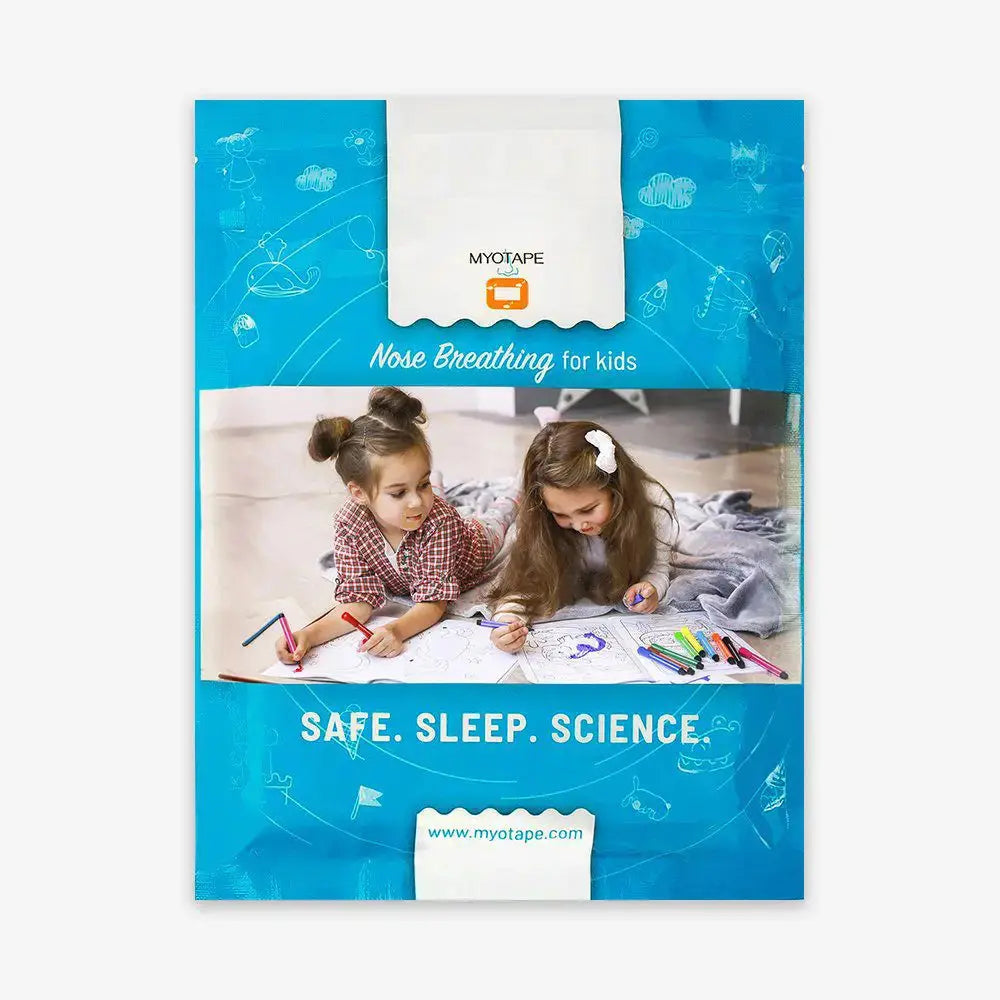
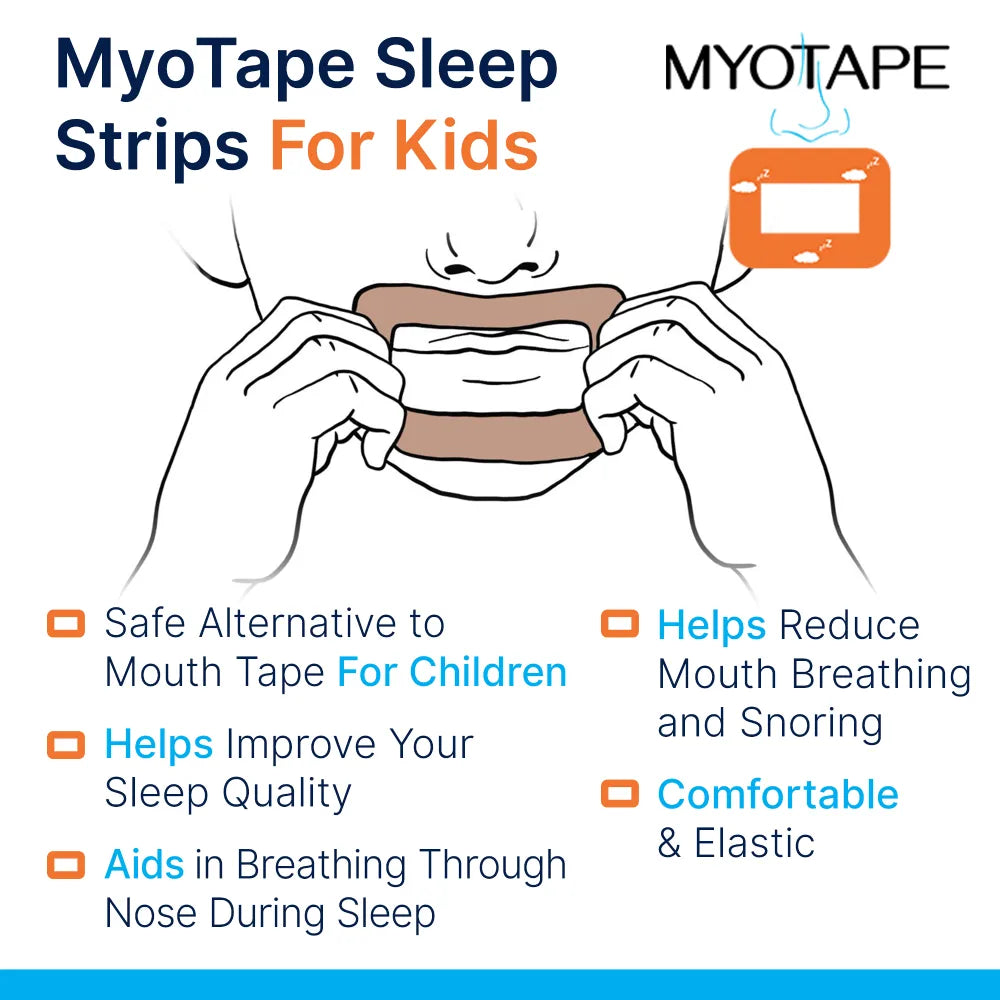
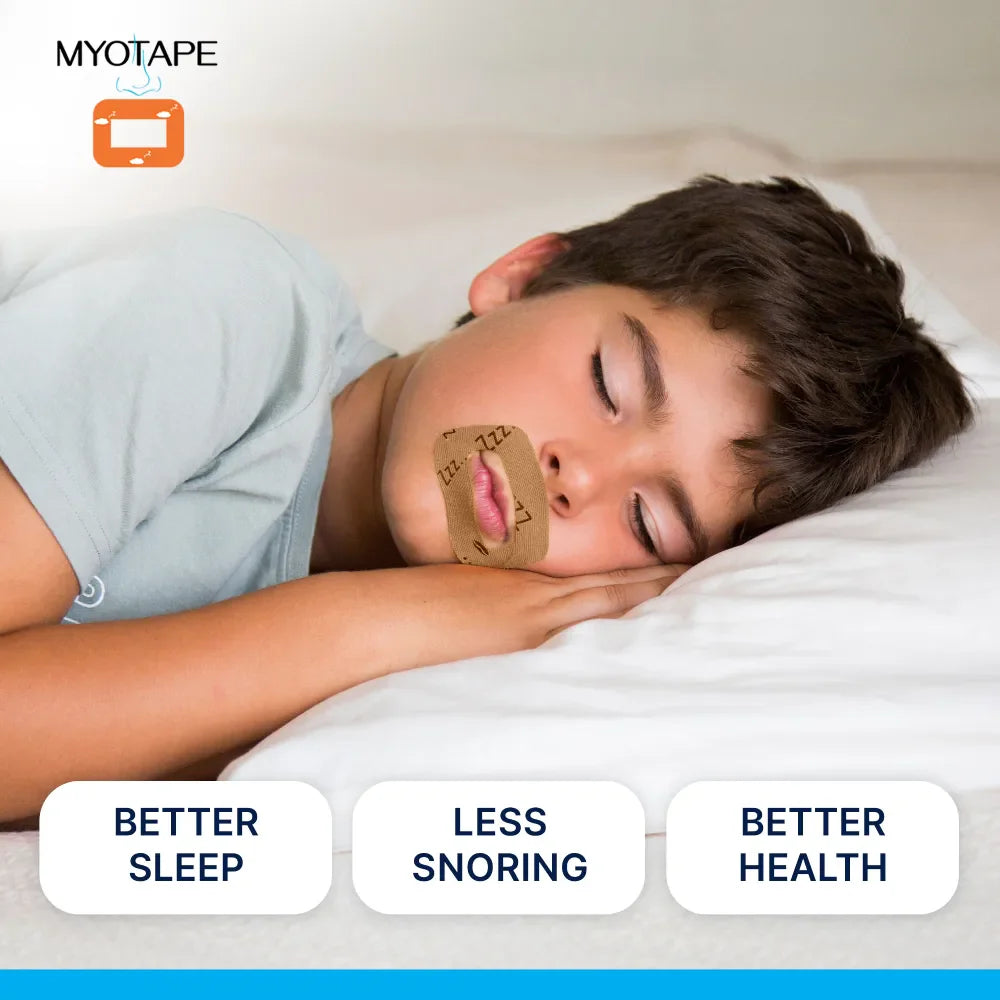
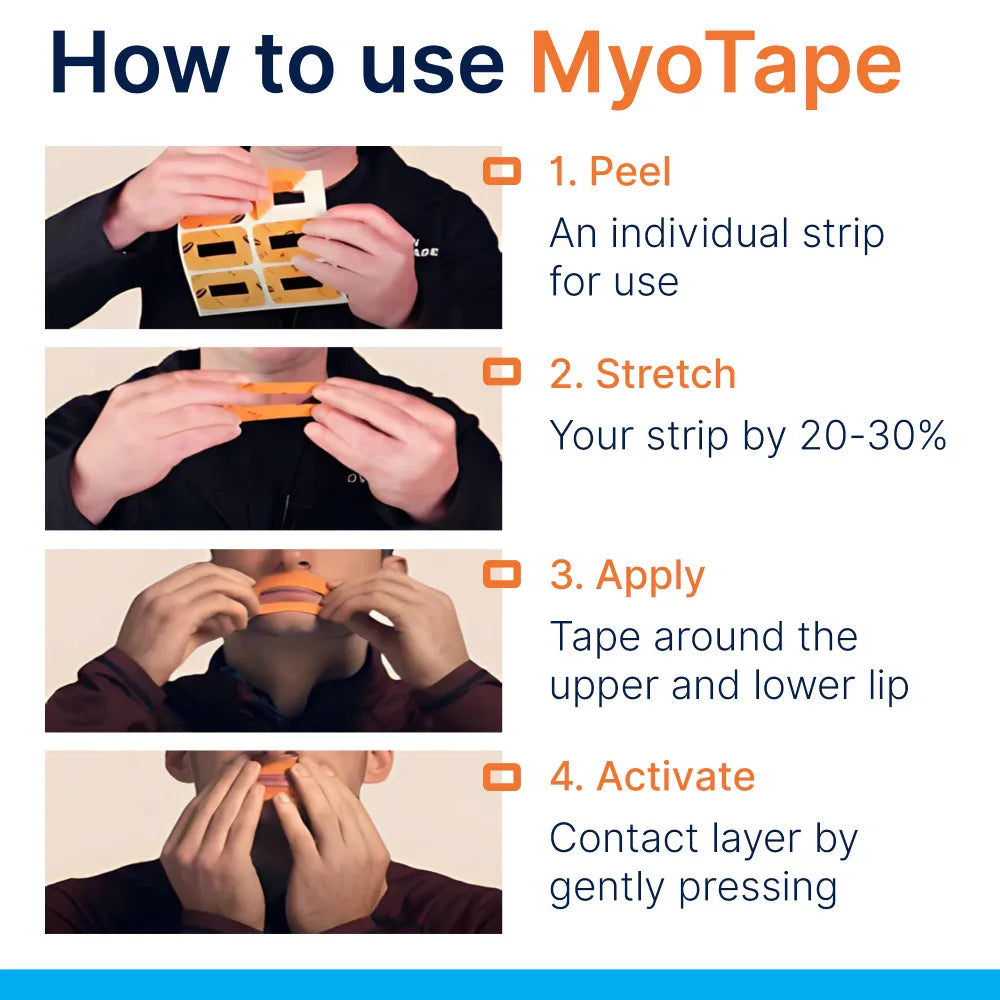
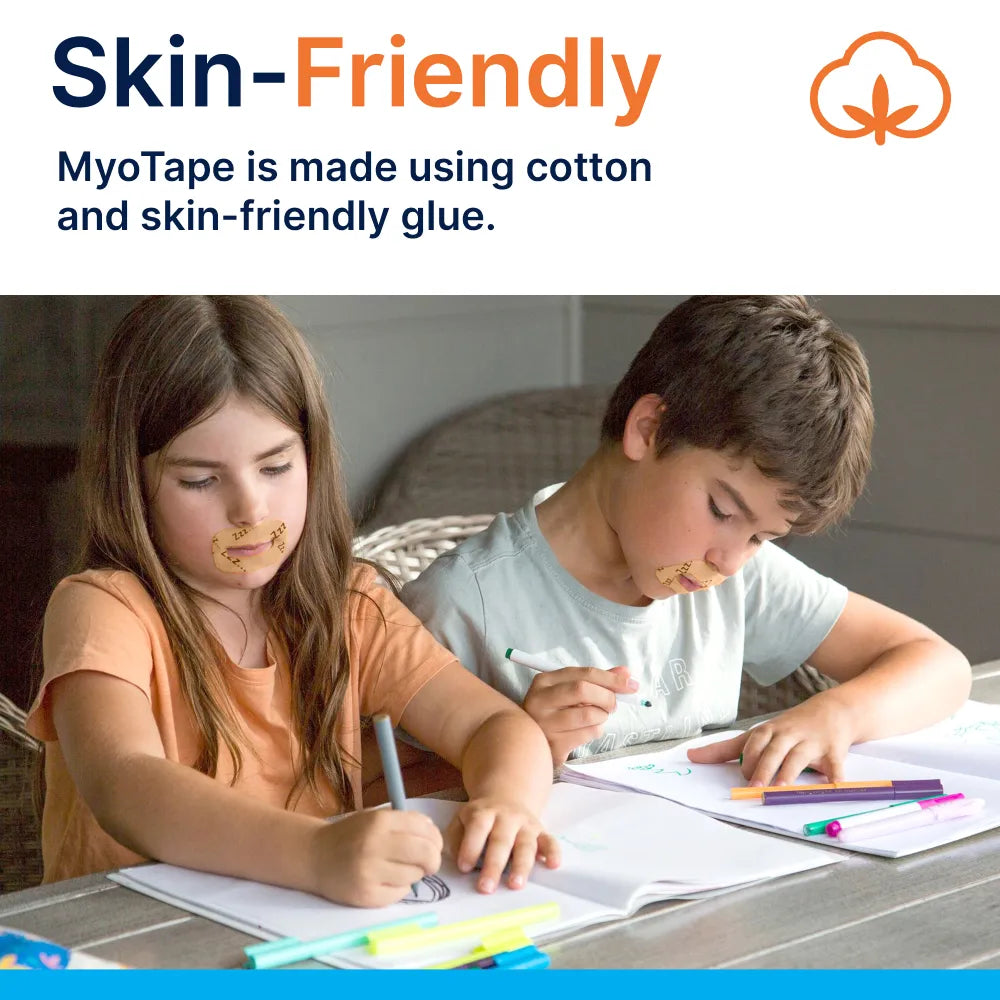










0 comments